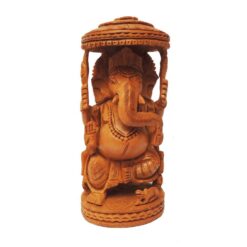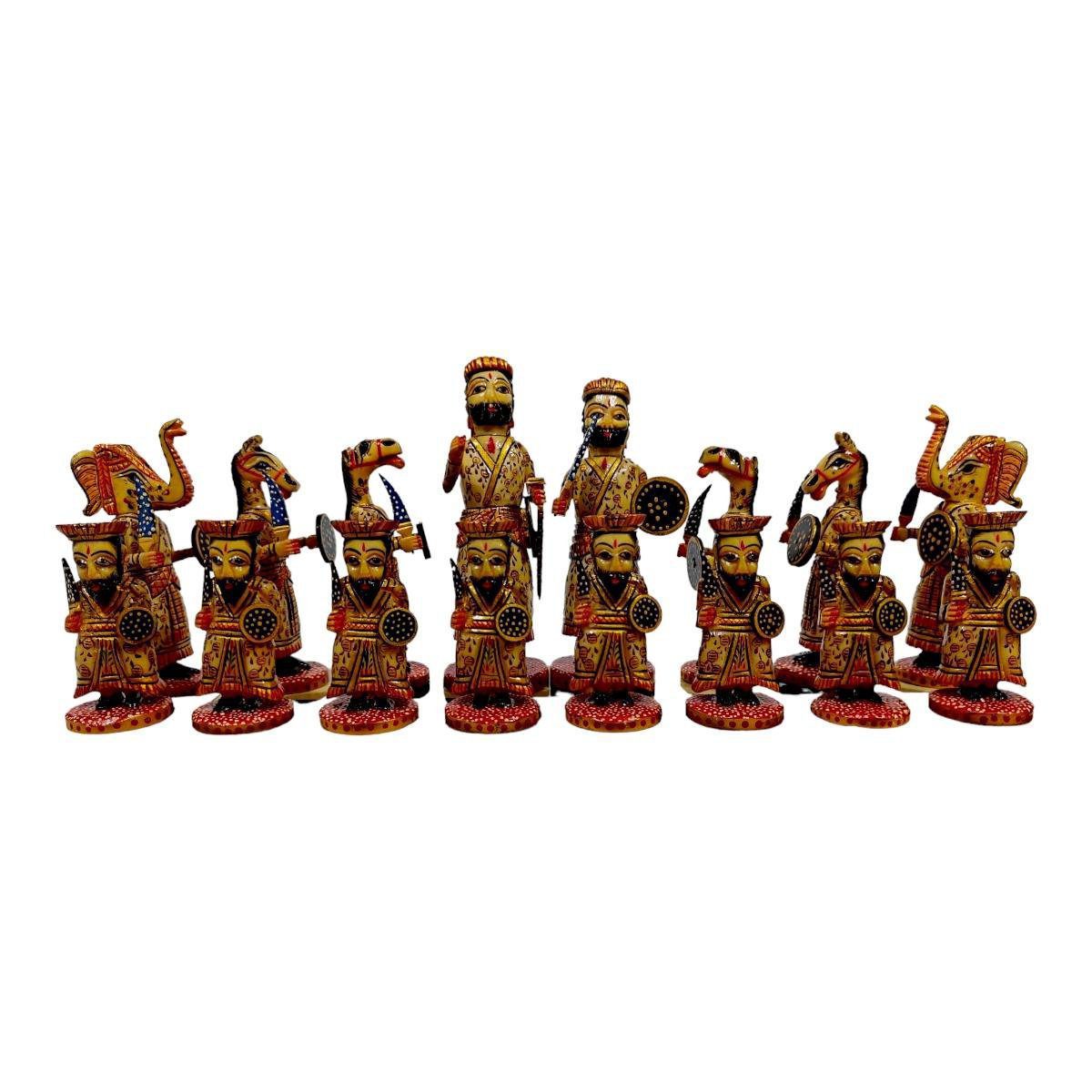The Indian Maharaja chess set, often referred to as a Maharaja chess set, is known for its intricately carved and decorative pieces that reflect the grandeur of Indian royalty. The names of the pieces in this traditional set correspond to their roles and appearances, which can be slightly different from the standard Western chess set. Here are the names and descriptions of the pieces typically found in an Indian Maharaja chess set:
-
Maharaja (King): The most important piece, often depicted as a majestic figure with elaborate clothing and a crown. The Maharaja represents the king in the game of chess.
-
Maharani (Queen): The queen piece, usually carved as a regal female figure adorned with jewelry and a crown. The Maharani is one of the most powerful pieces on the board.
-
War Elephant (Rook): Represented by an elephant with a howdah (a seat for riding on the back of an elephant), this piece symbolizes strength and stability, similar to the rook in Western chess.
-
Camel (Bishop): A piece carved in the shape of a camel, reflecting the bishop’s diagonal movement. Camels are significant in Indian culture and are a unique addition to the set.
-
Horse or Cavalry (Knight): Depicted as a horse or a mounted warrior, this piece represents the knight’s unique movement in the game.
-
Foot Soldier or Infantry (Pawn): The pawns are usually carved as soldiers or infantrymen, representing the front line of defense. They are often simpler in design compared to the other pieces.
These pieces are often crafted with intricate details, showcasing the artistry and cultural heritage of India. Each piece is a work of art, reflecting the opulence and history of Indian royalty.
Here’s a table comparing the names of pieces in a standard Western chess set and an Indian Maharaja chess set:
| Standard Chess Set |
Indian Maharaja Chess Set |
| King |
Maharaja |
| Queen |
Maharani |
| Rook |
War Elephant |
| Bishop |
Camel |
| Knight |
Horse or Cavalry |
| Pawn |
Foot Soldier or Infantry |
This table highlights the cultural differences in the representation of chess pieces while maintaining the fundamental roles and movements of each piece. The Indian Maharaja chess set often features elaborate carvings and decorations, reflecting the rich cultural heritage of India.



 Wood Lord Ganesha Carving | Hindu Religiose Ganpati Statue
Wood Lord Ganesha Carving | Hindu Religiose Ganpati Statue 